The German Army Aviation operates a small fleet of H145 LUH SAR helicopters for search and rescue tasks since 2020. This article gives an insight in the acquisition and operation of these aircraft.
Text and photos: Emiel Sloot
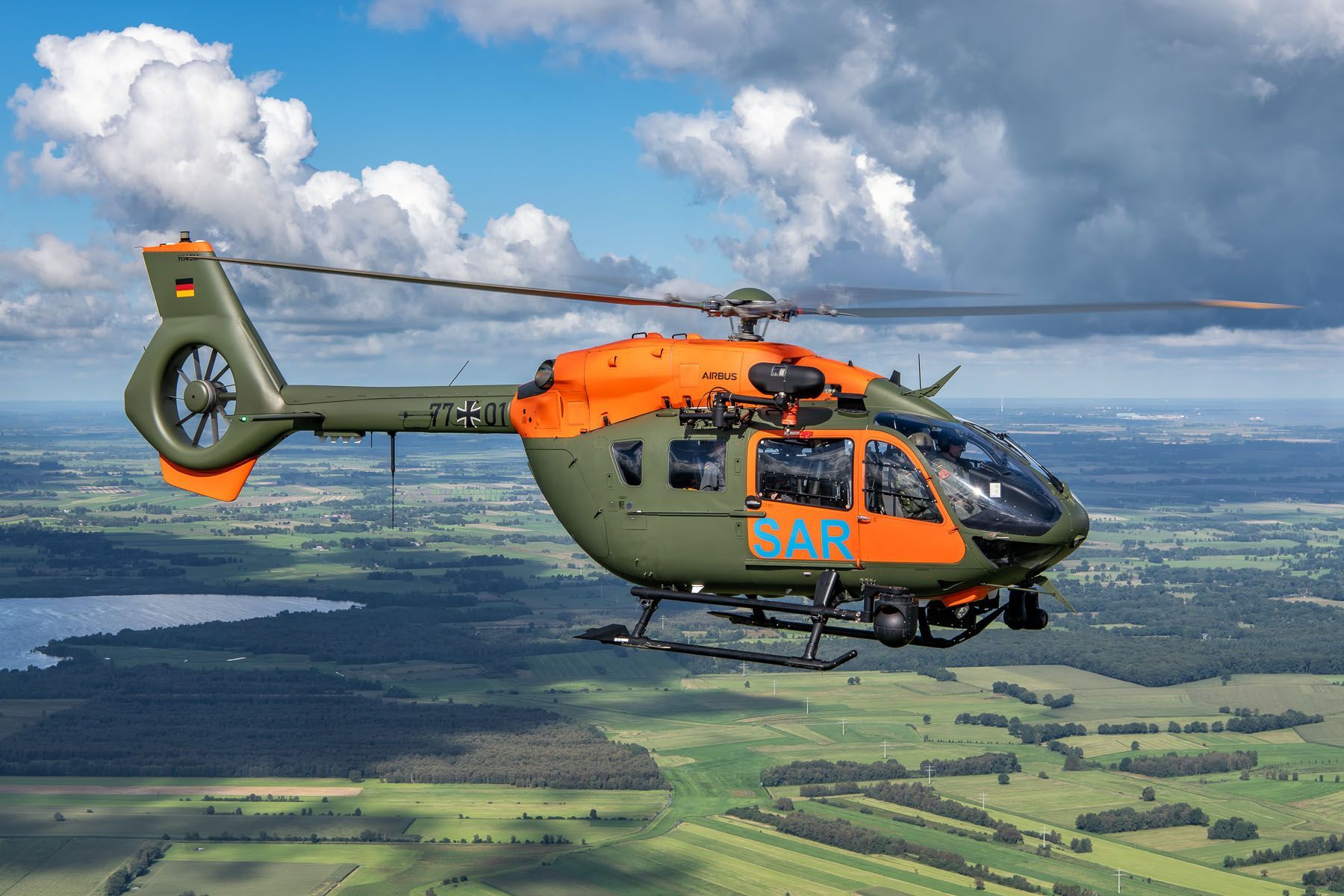
The Huey retires
From the late 1960s, both the Luftwaffe (German Air Force) and the Heeresflieger (German Army Aviation) had operated a large number of Bell UH-1D Hueys, license built by Dornier. These legendary helicopters equipped a number of rotary wing transport units serving several roles, including troop transport and support, VIP transport, but also carried out medical support missions throughout the country from various detachments. During the type’s final years of service, search and rescue was its last main duty. However, the Huey’s increasing costs and efforts to maintain these, prompted the German armed forces to arrange a replacement for the last operational UH-1Ds, serving with the Transporthubschrauberregiment 30 (THR 30 – Transport Helicopter Regiment 30) based at Niederstetten army air base.

Airbus deal
In Germany, the Bundesamt für Ausrüstung, Informationstechnik und Nutzung der Bundeswehr (BAAINBw – Federal Office of Bundeswehr Equipment, Information Technology and In-Service Support) is responsible for the development, evaluation and acquisition of new army equipment. While a proposal to buy H135 helicopters to replace the SAR Hueys was rejected in 2015, a new tender followed and after the evaluation process, the BAAINBw placed an order worth € 72.4 million at Airbus Helicopter in December 2018 for seven H145 helicopters, finally allowing the vintage Hueys to retire. As part of the deal, Airbus would also be responsible for maintenance and repair. Logistics support services are done at both the factory as well as the various bases, in a separate € 66.1 million contract running for nine years following delivery of the first helicopter.
The H145 was no newbie for the Bundeswehr. Since 2015, 15 H145Ms have been in use with Hubschraubergeschwader 64 (HSG 64 – Helicopter Wing 64) of the Luftwaffe at Laupheim in Baden-Württemberg, in support of their Special Operations Forces.
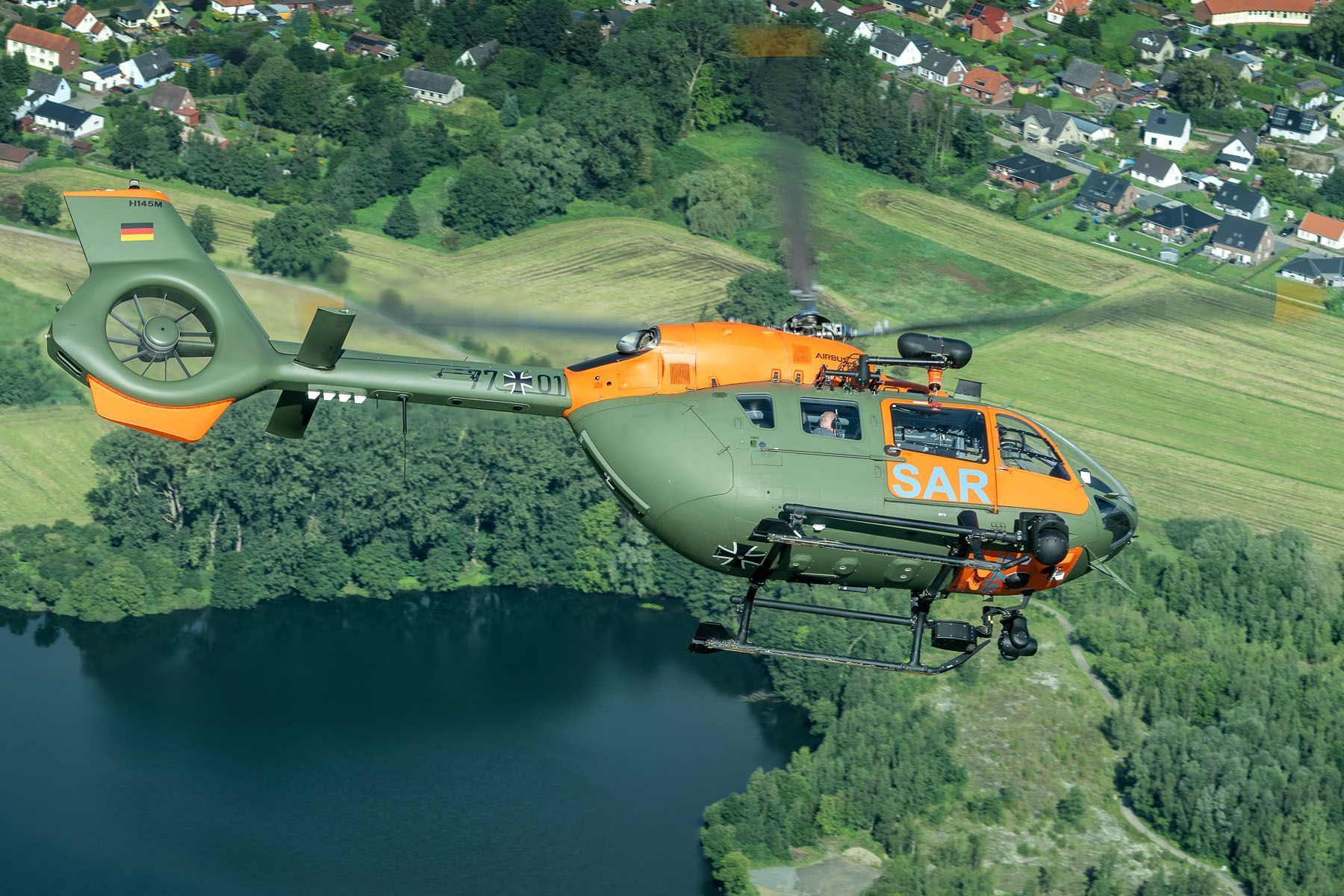
H145 LUH SAR
The H145 LUH SAR (Light Utility Helicopter – Search And Rescue) is based on the civilian 145T2 version, also designated BK 117 D2. Only a few pieces of military equipment are added, such as a command radio set. It is powered by a pair of Turbomeca Arriel 2E power plants that are equipped with Full Authority Digital Engine Control (FADEC). A Helionix digital avionics suite featuring innovative flight data management includes a 4-axis autopilot that significantly reduces the crew’s workload.
For its specific rescue role, the helicopters are equipped with a high-performance search light, thermal and infrared imaging sensors, emergency beacon locator systems, a winch for rescue hoist operations, and a load hook mounted under the fuselage. The latter is able to carry a water bucket for fire fighting. The on-board medical equipment suite includes a respirator for breathing assistance, a defibrillator, a vacuum mattress and an emergency backpack. The basic crew consists of two pilots and one air rescue specialist who also operates the rescue hoist. Only when specifically required, a medical doctor is added.
With the last SAR Hueys now rapidly approaching the end of their service life, deliveries were planned to start in 2020. However, the first H145 LUH SAR was handed over to the BAAINBw already on 10 December 2019, some three months ahead of the deadline agreed by Airbus and the Bundeswehr. The next four became available soon after, with deliveries between February and May 2020. The last two were initially used by Airbus Helicopter to train crews according to the contract, before the final example was handed over in Donauwörth on 19 March 2021.
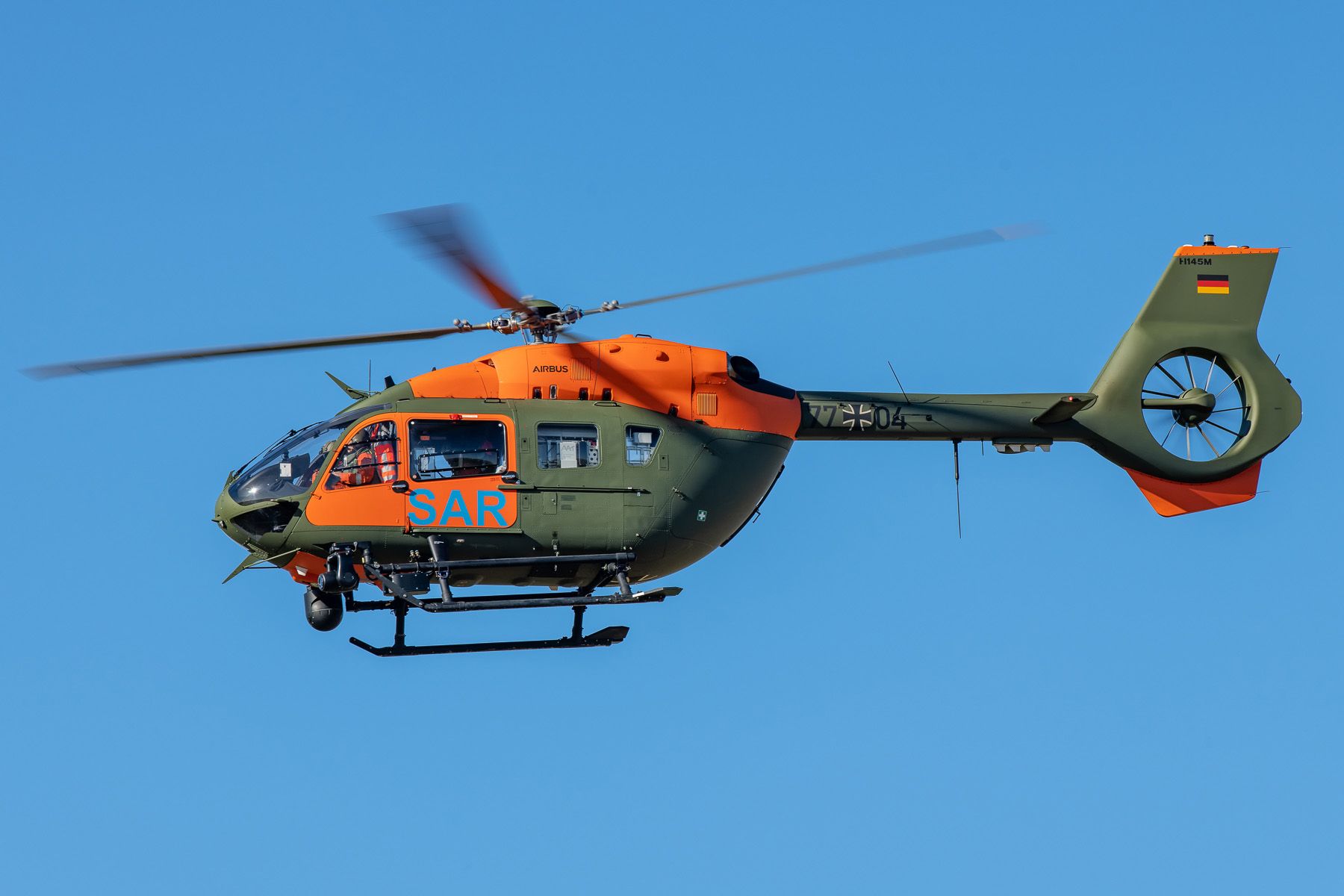
SAR detachments
Operations with the H145 LUH SAR commenced from Niederstetten, a Heeresflieger base in Baden-Württemberg. Here, they form the 7. Staffel (7th squadron) of THR 30, a regiment that is mainly equipped with NH90 TTH transport helicopters. The H145 is mainly used for search and rescue including the search of crashed or missing aircraft, both military and civilian, and subsequent casualty transport. Secondary roles are disaster relief and assistance in various rescue efforts.
Following crew training and field testing, the helicopters were available for operations on a 24/7 basis, with night vision equipment assisting the crew in darkness. The SAR site at Niederstetten, known as ‘SAR 63’, was fully up and running with the new type on 6 July 2020. In December 2020, ‘SAR 41’ at Nörvenich air base in North Rhine-Westphalia followed. Soon after the delivery of the seventh and last H145, the third detachment at Holzdorf in Brandenburg dubbed ‘SAR 87’ became operational in April 2021. While each SAR detachment basically consists of a single helicopter, a second one is on standby at Niederstetten for mountain rescue missions in the Northern Alpine region.
Following record rains and resulting disastrous flooding in the immediate vicinity of Nörvenich in July 2021, this air base saw extensive helicopter operations in a massive relief mission. Several H145 LUH SAR aircraft joined the effort, proving their value.
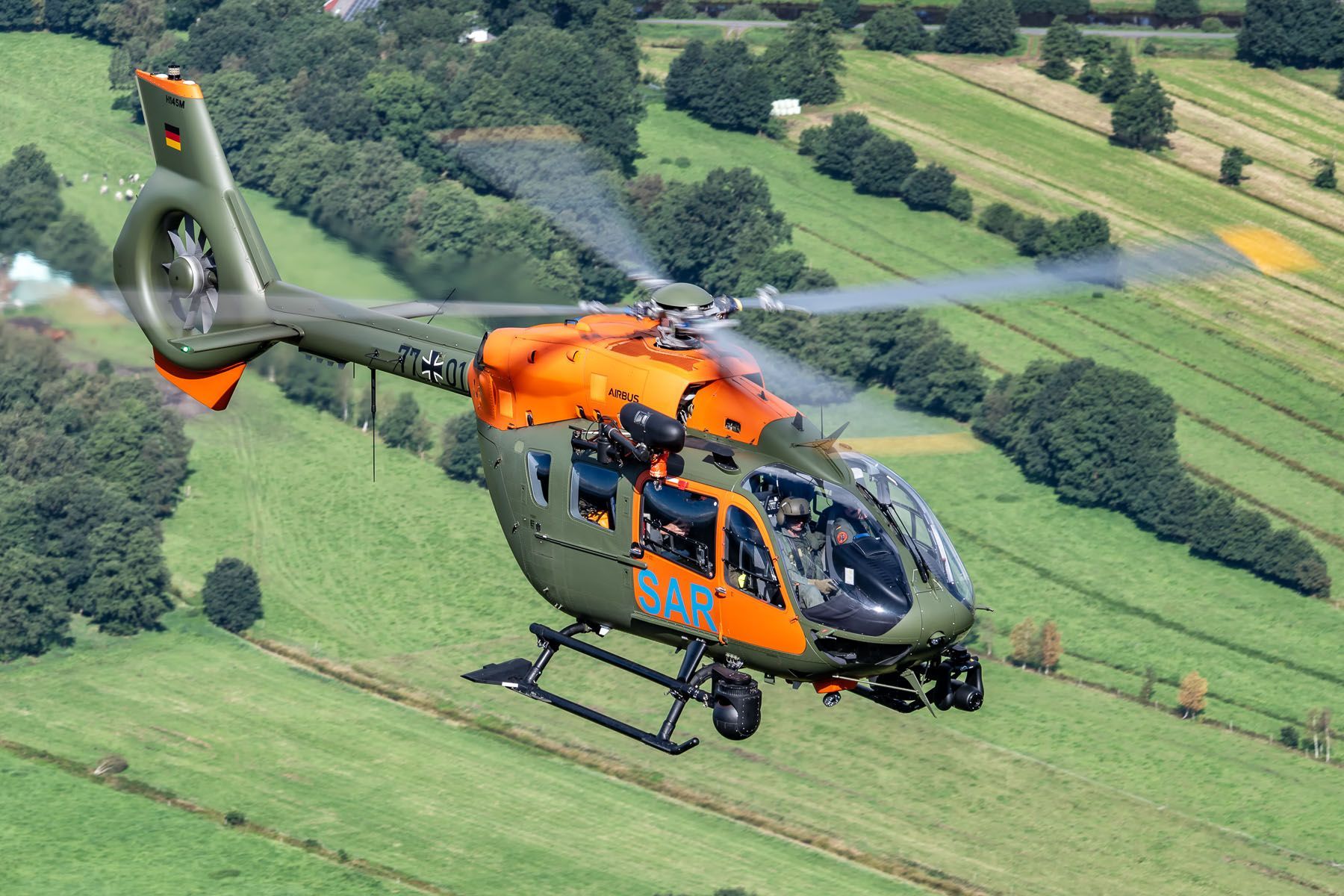
An extra helicopter joins the fleet
Although the contract covers seven helicopters, serialled 77+01 to 77+07, one more H145 was added to the fleet in 2020. This particular helicopter serialled 77+08 is operated jointly by THR 30 using it for liaison and crew training, and by the Wehrtechnische Dienststelle für Luftfahrzeuge und Luffahrtgerät der Bundeswehr (WTD 61 – Bundeswehr Technical and Airworthiness Centre for Aircraft) at Manching. Because of its dual purpose, 77+08 lacks both the day-glo doors with SAR marking and unit badges.
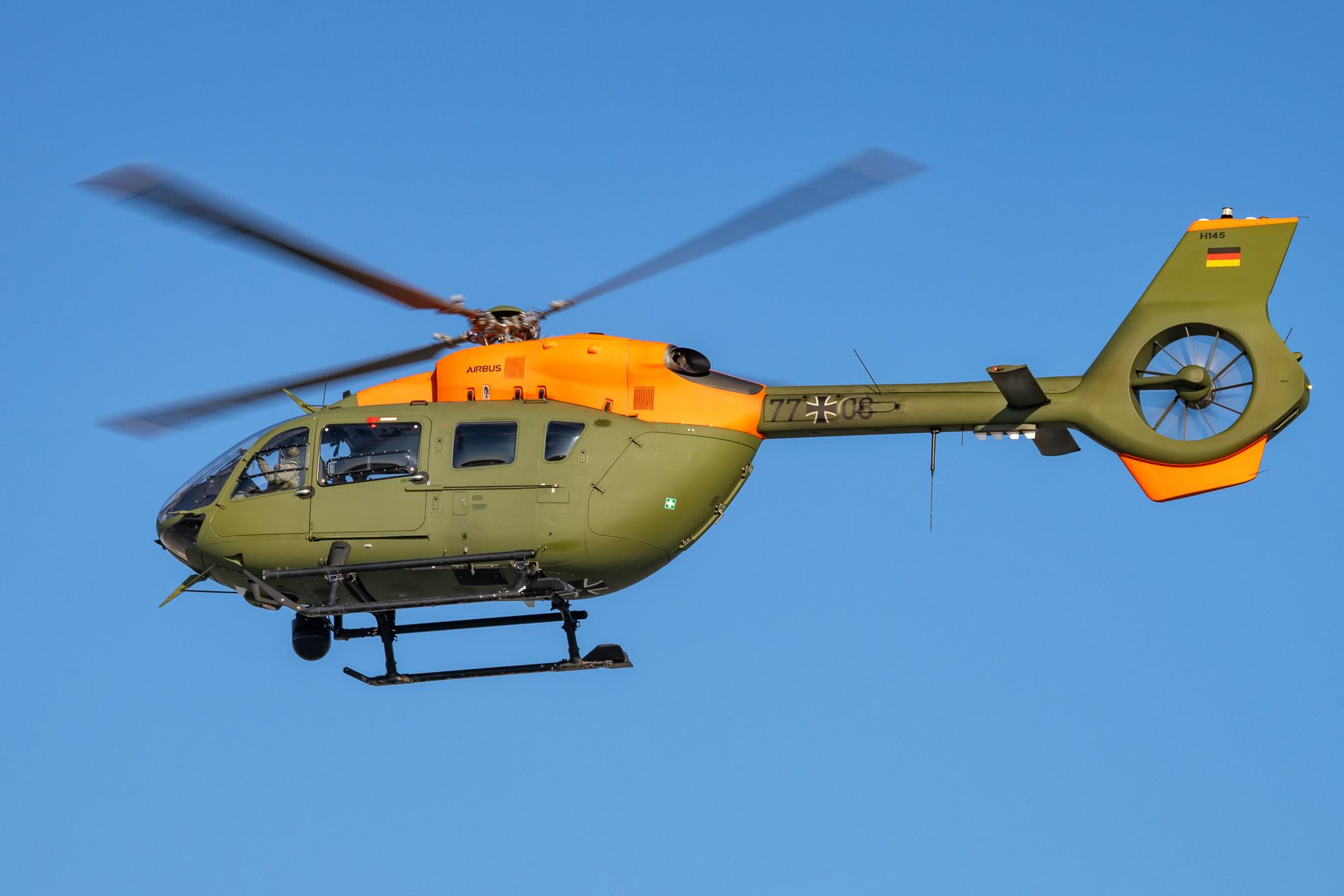
More H145s in the pipeline
Apparently, the Bundeswehr is quite satisfied with the H145. On 14 November 2023, an order was signed for 62 additional H145Ms plus an option for 20 more, mostly in the Leichter Kampfhubschrauber (LKH – light attack helicopter) role. Of these, five will join THR 30 at Niederstetten in 2027. With this acquisition, the H145 will become a regular sight in German skies. ■